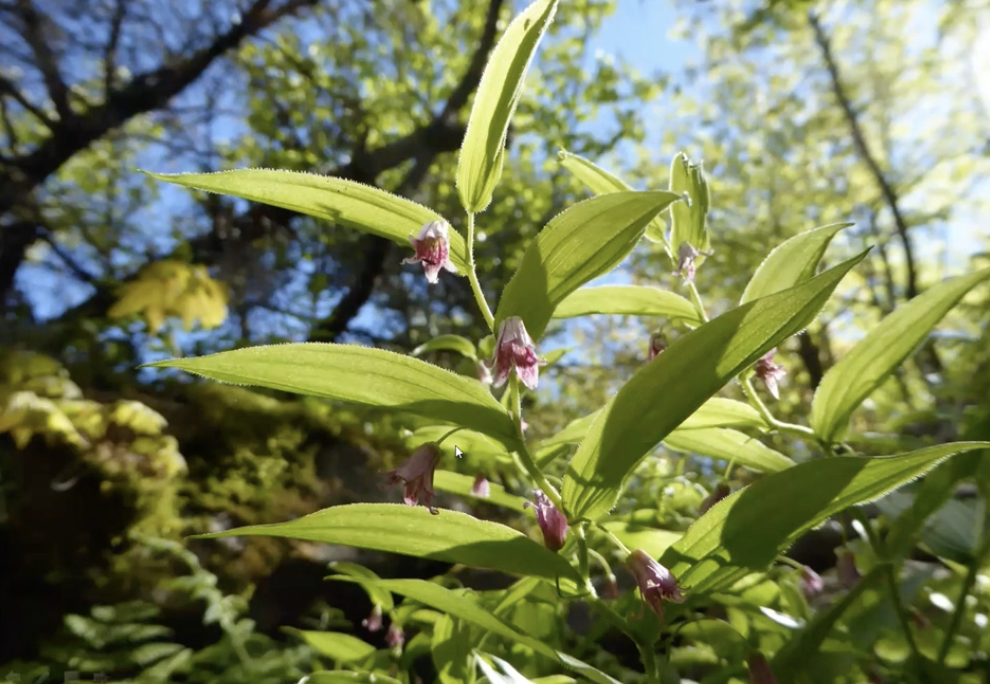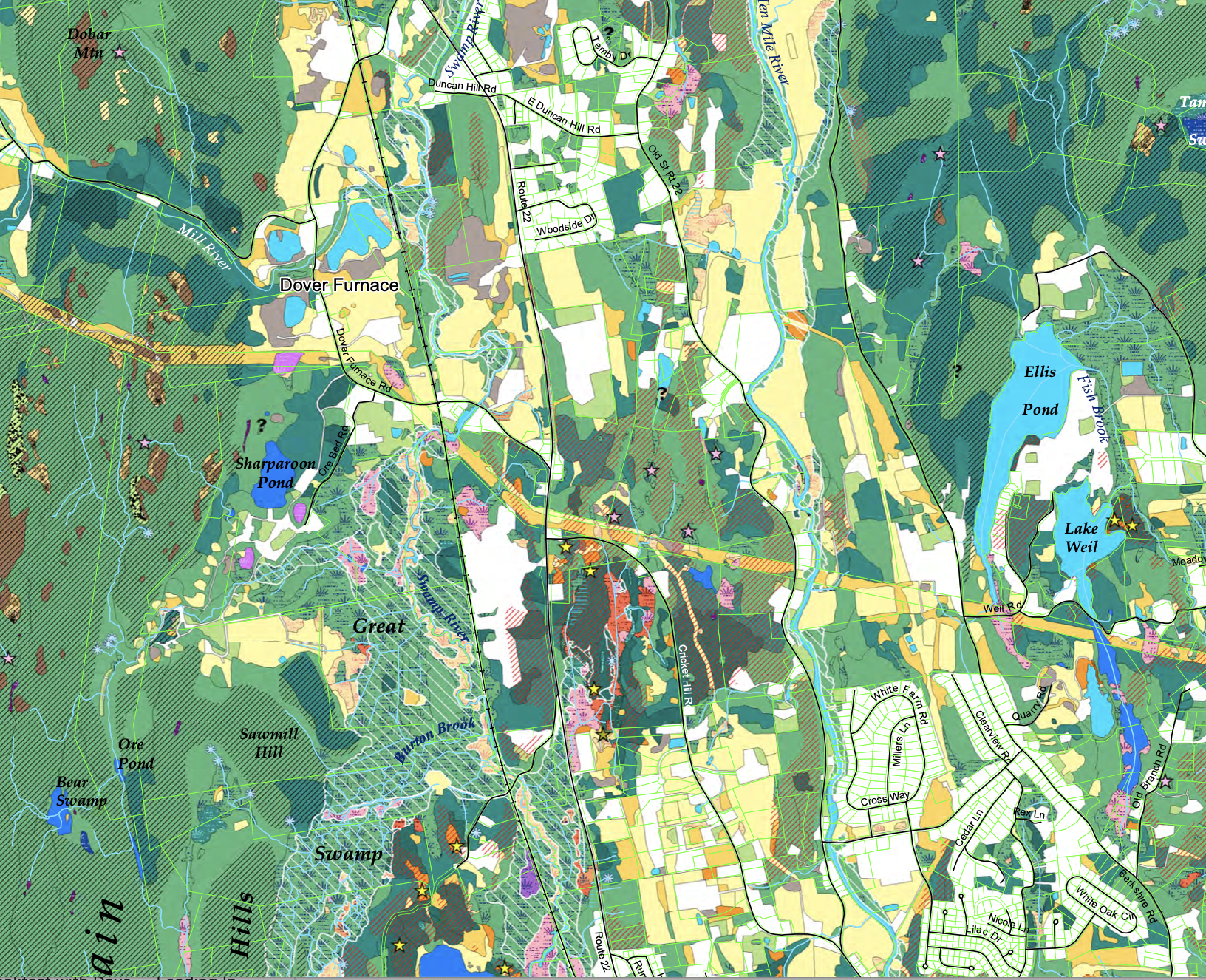
Events
To be informed of programs as they are scheduled, please subscribe to our Biodiversity Education email list!
Upcoming Events
Upcoming events will be posted here as they are scheduled

Wetlands: A 3-part webinar series
In recognition and celebration of American Wetlands Month in May, the Hudson River Estuary Program and Hudsonia Ltd. were pleased to offer a 3-part webinar series dedicated to Wetland Values, Identification, and Protection.

Wetlands: Values, Threats, and Protection 2020
Wetlands: Values, Threats, and Protection Webinar 2020
Past Events
Click on an event to view more information and to view recordings (if available)
Use arrow keys to scroll through events held each year
In this talk, Amanda highlighted the fascinating biology of these night wanderers, the ecological services they provide to our farmers, and how we can support them amid many threats. Bats are social mammals, yet little is known about the social functions of the wide array of sounds heard outside their colonies. Amanda will share the research she intends to launch to help fill that gap.
In this field workshop, we discussed the values of small wetlands and streams; how to find and identify them; threats to wetlands and streams; and effective regulatory and non-regulatory protections.
Hosted and led by Farmscape Ecology Program with Hudsonia, events held around the region to discuss the newly published Field Guide and the landscapes described within.
A guided bat walk with Dr. Amanda Bevan Zientek, Director of the Biodiversity Resources Center at Hudsonia, in collaboration with Dutchess Land Conservancy. Bats are among the most mysterious and misunderstood members of the animal kingdom, but their role in keeping insect populations under control and as pollinators is vital for ecosystems around the world.
In-person event to learn about the significant habitats found on White Feather Farm, including forests, fields, and wetlands. This event was led by Hudsonia Biologist Chris Graham.
Critical Environmental Areas (CEAs) are areas officially designated by counties or municipalities to alert landowners, developers, and regulatory agencies to features of importance or concern during environmental review under the SEQR process. This webinar presented the process of designating CEAs, with recent examples in the Hudson Valley, and will address convening a working group, engaging with and informing landowners within a proposed CEA and the general public, and the step-by-step process of identifying, delineating, describing, and adopting a CEA.
In this field workshop, we discussed the values of small wetlands and streams; how to find and identify them; threats to wetlands and streams; and effective regulatory and non-regulatory protections.
Get Outside! workshop hosted by Partners for Climate Action Hudson Valley and sponsored by Dirty Gaia and Hudsonia! Native plants are essential for healthy, climate-resilient ecosystems. Learn plant identification and responsible seed collection techniques.
Little Stony Point, part of Hudson Highlands State Park, is a small, rounded “point” that juts out into the Hudson River. It has a nice variety of habitats for such a small area, including mature oak forest, mixed-hardwood forest, a rocky summit (with excellent views), tidal sandy shore, and two dry, sandy meadows, where several interesting species dwell.
This lecture “Urban Biodiversity: What a Damaged Landscape Teaches” was delivered online by Erik Kiviat on July 6th, 2023 for the Virtual Public Lecture Series. These free events are organized by 'T' Space / SMHF in the framework of the 2023 Summer Architecture Residency program titled "Light + Polychromy".
Which natural areas are most vital in my community? How do we plan for a future that sustains nature and quality of life for residents? What types of conservation policies have been successful in other communities? This workshop addressed these questions and introduced approaches for conserving natural areas and water resources from the town-wide scale to the site level.
Flat Rock Brook Nature Association invites author Erik Kiviat to present the findings from the book he recently published with Kristi MacDonald: Urban Diversity - The Natural History of the NJ Meadowlands. Wednesday, May 24th, 2023 (in-person)
Arranged by Hackensack Riverkeeper and the Puffin Cultural Forum, Teaneck Creek Conservancy invites author Erik Kiviat to present the findings from the book he recently published with Kristi MacDonald: Urban Diversity - The Natural History of the NJ Meadowlands. Friday, May 5, 2023 (in-person)
Join us for an early spring walk and discover the diversity of habitats at Vlei Marsh, one of Winnakee Land Trust’s most interesting and ecologically significant protected lands.
This program is a co-presentation of Winnakee Land Trust, Dirty Gaia and Hudsonia. Saturday, May 6, 2023 (in-person)
From tidal wetlands to grasslands, large forests, and rocky crests, the Hudson Valley is home to diverse habitats that support abundant fish, wildlife, and plant species, and provide numerous benefits to local communities. Despite comprising just 10% of the state’s land area, the Hudson Valley supports nearly 90 percent of the bird, mammal, reptile, and amphibian species that live in New York. The region is also one of the fastest growing in the state, making conservation of this rich natural heritage even more urgent.
Chris Graham, Hudsonia field botanist who focuses on rare species conservation, and the effects of resource extraction and global change on plant communities, walks us through a few of his favorite wildflowers in this webinar hosted by the Rensselaer Plateau Alliance. March 2022
This webinar reintroduces Hudsonia’s habitat maps and reports to municipal officials and demonstrates how to access the newly digitized maps, adapted by Don Meltz’s Marist college students, through the new web map portal. In addition, a discussion was held on some of the ways the information can be used for municipal purposes. May 2022
Habitat assessment is a process used to evaluate potential impacts of proposed activities or development for natural areas, plants, wildlife, and water resources on a given site. In this webinar, Gretchen Stevens introduced model habitat assessment guidelines that municipal planning boards and other agencies may use in reviewing development projects. June 2022
A field workshop held as a follow-up to the Habitat Assessment Guidelines webinar held on 9 June 2022.
Part of the NOAA science seminar series, “Rethinking the Common Reed Grass – Phragmites“. October 2021
In this webinar series, we discussed the ecological values of small streams; how to identify them remotely and in the field; threats to stream habitats and water quality; the status of state and federal regulatory programs for small streams; and how to extend local protections to these important resources. November 2021
New York communities may designate geographic areas with exceptional or unique environmental characteristics as Critical Environmental Areas (CEAs). Learn more about them in this short video and fact sheet. June - November 2021
In this webinar series, we discussed the ecological values of small streams; how to identify them remotely and in the field; threats to stream habitats and water quality; the status of state and federal regulatory programs for small streams; and how to extend local protections to these important resources. May 2021
In three sessions, we discuss the ecological and water resource values of wetlands; how to identify unmapped wetlands on site plans and other maps using online tools and in the field; the status of state and federal regulatory programs for wetlands; and how to extend local protections to these important resources. September 2020
This webinar addressed how to obtain natural resource information for a site, techniques for map interpretation, and effective ways incorporate conservation principles for significant habitats, wildlife, and water resources into those reviews. June 2020
In this webinar we discussed the ecological values of small streams; how to identify them remotely and in the field; threats to stream habitats and water quality; the status of state and federal regulatory programs for small streams; and how to extend local protections to these important resources. August 2020


























